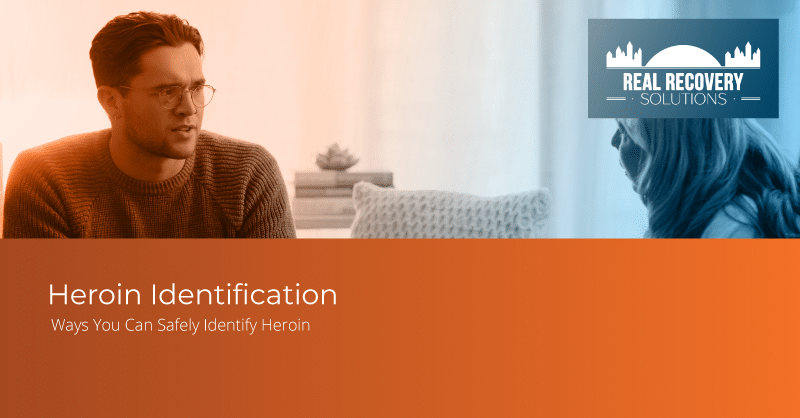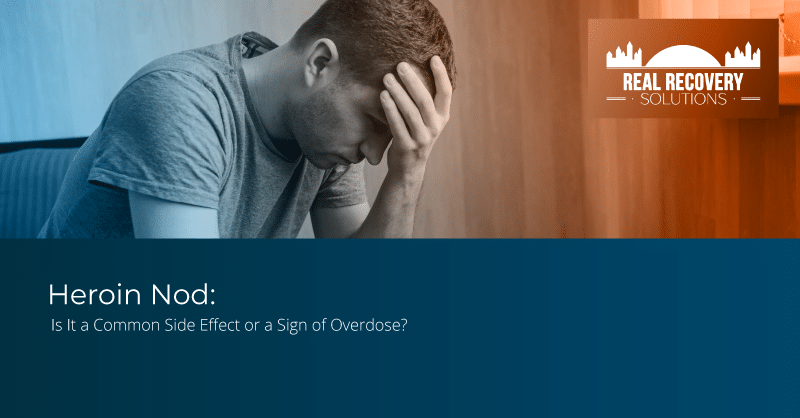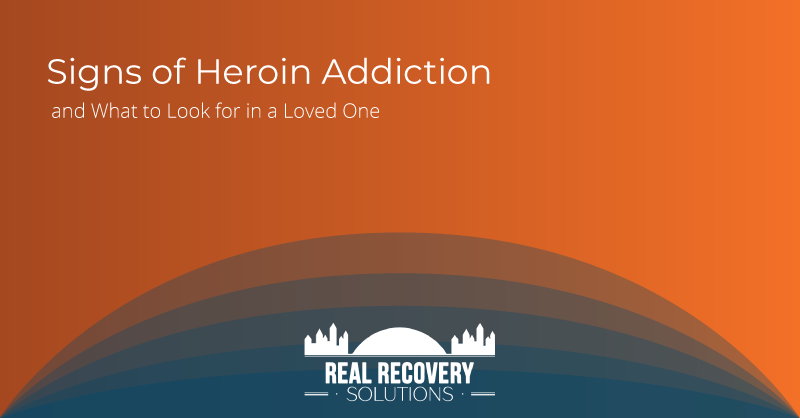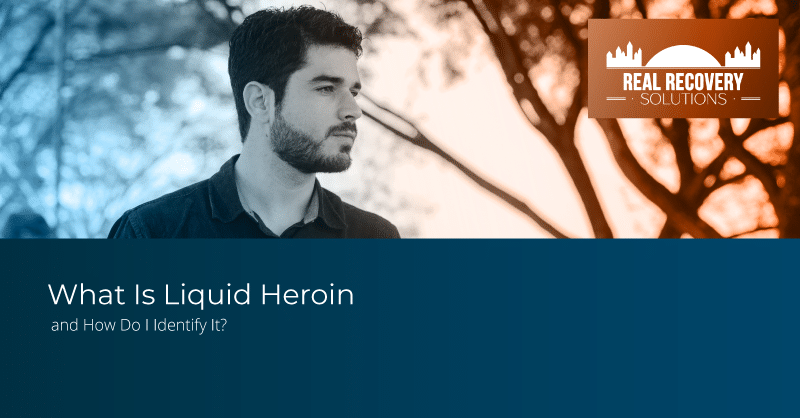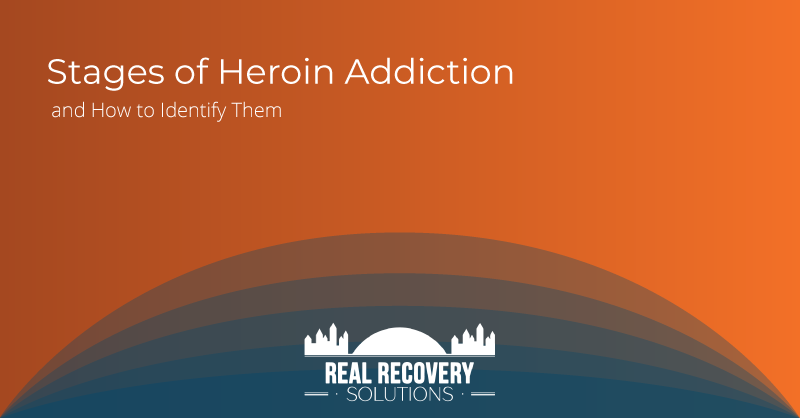Finding an illicit substance when you’re not expecting it is not usually a good experience. Whether you’re in your own home, out in public, or visiting someone, it can make you feel unsafe and like you can’t trust the people you’re with.
Heroin identification is the key to understanding just what it is that you’re looking at. The substance usually takes the form of a coarse white or brown powder. Black tar heroin takes on a more sticky, rock-like appearance.
If you’ve found heroin somewhere you normally feel safe, chances are that you’re not just worried about yourself. You’re probably concerned about a loved one, and that’s a valid response. In 2023, just under 100 people in the state of Florida died with heroin in their system.
At Real Recovery, we know how hard it can be to watch someone you care about live with a substance use disorder. Many members of our staff are in recovery themselves. We’re here to support you and your loved ones while you navigate recovery.
Why Would You Need to Identify Heroin?
Most people who are trying to identify heroin are doing so because they’re concerned about a loved one. Finding a substance in your home or among the belongings of a loved one can be scary.
However, if you’re afraid that a loved one is taking heroin or living with a heroin use disorder, you need to be able to identify the substance. This is the best way to confirm whether or not the person you care about is taking heroin. Once you know for sure, you’ll be better prepared to approach the situation.
There may also be other contexts in which you need to be able to identify heroin. For example, if you come across the substance in a public or social setting, the presence of illicit substances like heroin could pose a threat to you and your safety. Being able to recognize heroin could be an important part of assessing your surroundings.
Regardless of the specific context in which you’ve found something you think could be heroin, identifying it is the appropriate next step. Knowledge replaces fear, and you’ll be able to come up with next steps — whether that’s approaching your loved one about a heroin use disorder or removing yourself from a dangerous situation.
What Are the Ways You Can Safely Identify Heroin?
If you’ve encountered a substance you think could be heroin, you should be cautious about how you identify it. You want to avoid accidentally ingesting the substance by snorting or swallowing it, because that could cause you to experience the side effects of heroin.
The 4 major ways to identify heroin are:
- Identifying heroin by sight: This is the safest way to ID heroin, because you don’t risk consuming it by accident. Usually, heroin comes in the form of a white, brown, or tanish powder that looks similar to flour or starch. Black tar heroin is a gooey substance that looks like a small, black rock or even a piece of charcoal.
- Identifying heroin by touch: Touching heroin is typically safe, as the substance is not transdermal, but it is not usually recommended. If you do touch it, you should wash your hands immediately afterwards. Powdered heroin typically feels fine and coarse, like small grains. Black tar heroin has a sticky texture.
- Identifying heroin by smell: Snorting heroin is a common way that the substance is ingested, so sniffing the substance is not recommended. Depending on what the heroin is made of or cut with, it often has a vinegar-like smell or a chemical, medicinal smell. However, in its purest form, heroin is odorless.
- Identifying heroin by taste: You should never put heroin in your mouth on purpose, especially as a means of identifying the substance. You could experience side effects, even in small doses, if you don’t have a tolerance for the substance. Heroin has a very bitter, medicinal taste.

Recognizing Different Forms of Heroin
It’s important to know that heroin doesn’t always look the same. There are a few different types of heroin, each with distinctive characteristics.
Powdered heroin is the most common. It is a grainy substance that is often white, brown, or yellowish, depending on its purity and what’s used to produce it. In some cases, heroin can be dyed into novelty colors, but this isn’t a common practice. Heroin is usually snorted in its powder form. However, it can also be smoked.
Black tar heroin, as mentioned earlier, has a stickier texture and has the appearance of a black blob or a bit of charcoal. Because of its consistency, black tar heroin isn’t snorted. Instead, it’s usually heated up and smoked.
Both powdered heroin and black tar heroin can be mixed with water and melted down to form liquid heroin. However, black tar heroin is less water soluble than powder, so the practice is less common. Heroin is typically stored in its powder form and then melted down right before use so it can be injected into the bloodstream.
Sometimes heroin is mixed with other substances. For example, it’s common to mix heroin with a stimulant like cocaine to create what’s known as a speedball.
Heroin isn’t the only opioid that people take recreationally. Fentanyl is a synthetic opioid that’s as much as 100 times stronger than traditional heroin. If you find brightly colored pills, for example, it could be “rainbow fentanyl,” which comes in bright colors.
Can Paraphernalia Help You Identify Heroin?
If you encounter a substance and you’re not sure what it is, sometimes the tools used to consume it can help you identify the substance. Any of these items on their own may be innocuous, but finding a collection could indicate how they’re being used.
Common paraphernalia associated with heroin use include:
- Burnt spoons and bottle caps to melt down heroin
- Needles and syringes for injecting heroin into the vein
- Rubber tourniquets, belts, and shoelaces to use to accentuate veins in the extremities
- Balloons are a common tool used to store heroin
- Cotton balls or cigarette filters to filter heroin before it’s drawn into the syringe
- Snorting tools like straws, rolled-up dollar bills, or hollowed-out pens
- Smooth surfaces, like a hand-held mirror to snort heroin off of
- Razors or credit cards to make small lines of heroin
- Aluminum foil and gum wrappers for storage
- Glass or metal pipes with a bulbous head are used to smoke the substance
If your loved one takes heroin regularly, they’ll probably have at least some of these items. They likely have a preferred method of consumption, so they’ll have tools for snorting or injecting, but not necessarily both.
When it comes to storage, the person you care about may have a kit put together with everything they need in one place. Often, people find everyday items to hide or store their kit in, like a small box or a backpack.
Using Other Context Clues to Identify Heroin
You don’t necessarily need to see the substance itself to identify the signs of heroin use disorder. If you believe that something is going on with your loved one, you should trust your gut. Your loved one’s behavior can indicate whether or not they’re taking heroin.
Heroin is a depressant, meaning it slows down the central nervous system, and it has an intense euphoric effect. If you’re with someone who is “high” on heroin, they won’t be acting like themselves. They’ll be extremely lethargic, with small pupils, and they may be nodding in and out of consciousness.
You may also notice your loved one using specific slang to talk about heroin. Common street names for heroin include:
- Brown
- Dirt
- Chiva
- Harry
- Hell Dust
- Horse
- Junk
- Smack
- Thunder
- H
- Dragon
This is not an exhaustive list. Sometimes names differ depending on the region. You may also notice suspicious social media activity.
Sometimes, people use emojis like 🤎 and 🐉to discuss heroin in text messages or online spaces.

Treatment For Heroin Addiction At Real Recovery in Tampa Bay
Finding heroin is usually a stressful experience, especially if it belongs to a loved one. For many, it is the beginning of a long journey for the person who finds the substance, the person who’s taking it, and everyone else involved.
If you’ve recently discovered that a loved one has a heroin use disorder, know that recovery is possible. The right heroin addiction treatment will empower your loved one with the tools they need to end their relationship with heroin and find a fulfilling substance-free life. The right program will include evidence-based therapy, 12-step programming, and the use of a strong support network.
At Real Recovery, we can support your loved one starting with inpatient treatment all the way through a year or more of sober-living. Call us at 813-373-6762 to learn more about how we can help today.
Real people. Real solutions. Real results.

